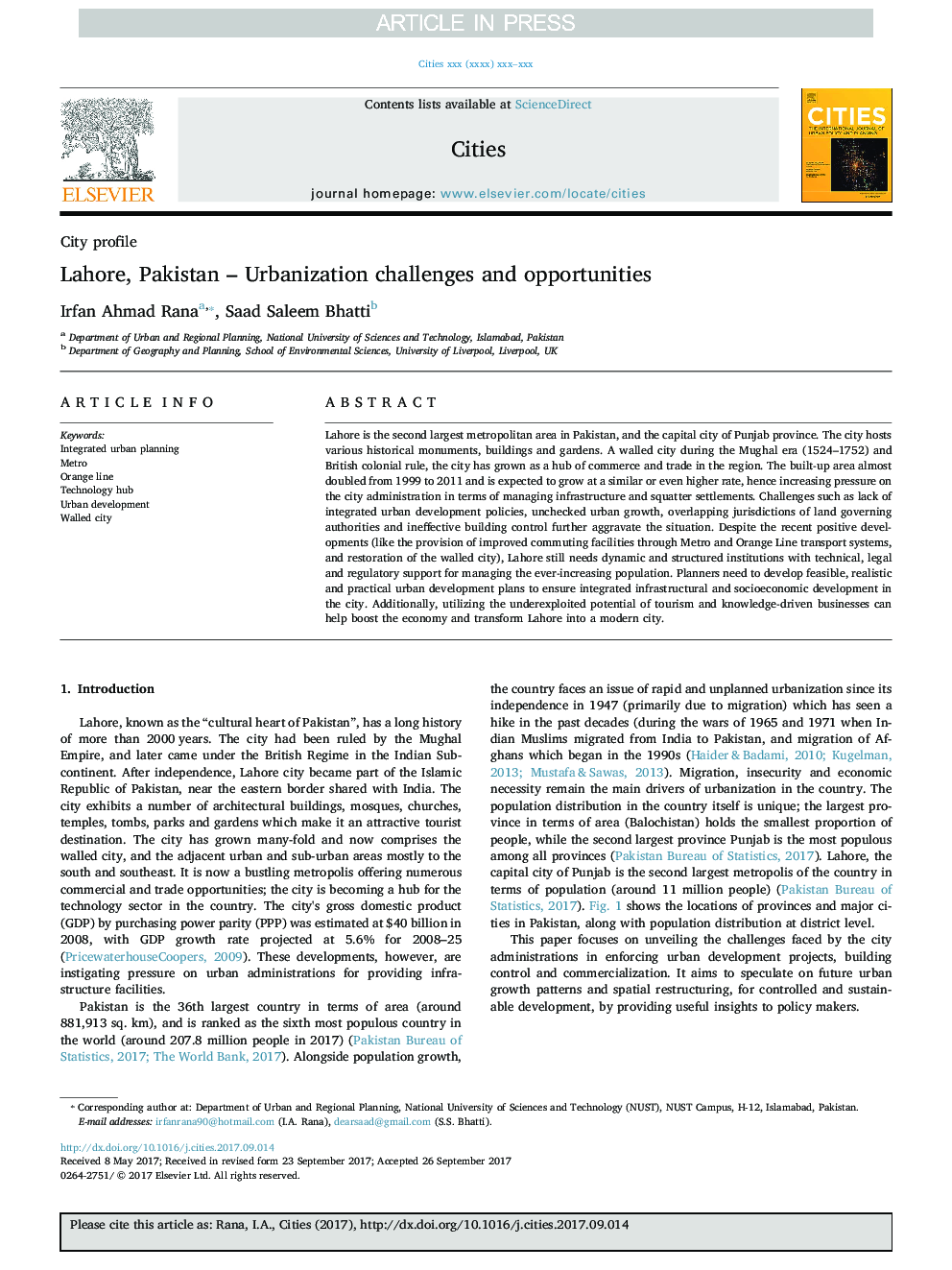| Article ID | Journal | Published Year | Pages | File Type |
|---|---|---|---|---|
| 7417777 | Cities | 2018 | 8 Pages |
Abstract
Lahore is the second largest metropolitan area in Pakistan, and the capital city of Punjab province. The city hosts various historical monuments, buildings and gardens. A walled city during the Mughal era (1524-1752) and British colonial rule, the city has grown as a hub of commerce and trade in the region. The built-up area almost doubled from 1999 to 2011 and is expected to grow at a similar or even higher rate, hence increasing pressure on the city administration in terms of managing infrastructure and squatter settlements. Challenges such as lack of integrated urban development policies, unchecked urban growth, overlapping jurisdictions of land governing authorities and ineffective building control further aggravate the situation. Despite the recent positive developments (like the provision of improved commuting facilities through Metro and Orange Line transport systems, and restoration of the walled city), Lahore still needs dynamic and structured institutions with technical, legal and regulatory support for managing the ever-increasing population. Planners need to develop feasible, realistic and practical urban development plans to ensure integrated infrastructural and socioeconomic development in the city. Additionally, utilizing the underexploited potential of tourism and knowledge-driven businesses can help boost the economy and transform Lahore into a modern city.
Keywords
Related Topics
Social Sciences and Humanities
Business, Management and Accounting
Tourism, Leisure and Hospitality Management
Authors
Irfan Ahmad Rana, Saad Saleem Bhatti,
